Method uses a fraction of water needed for productive harvests
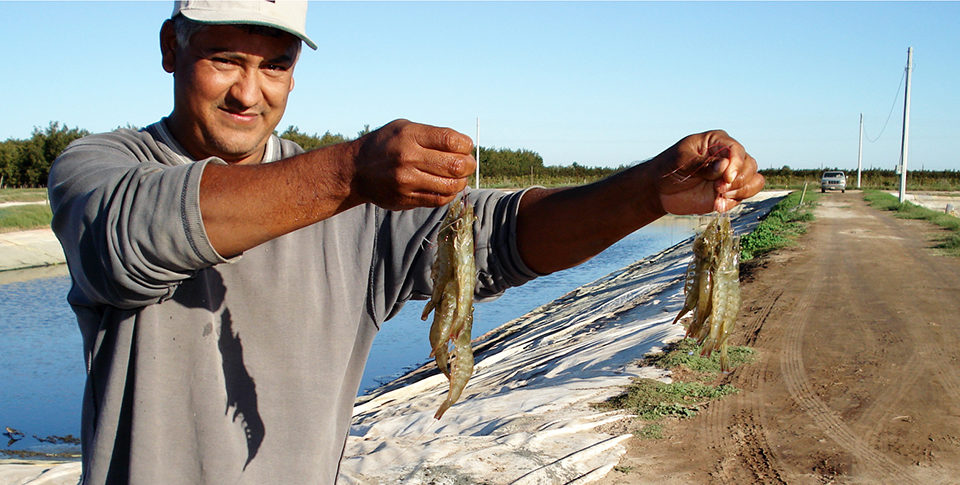
Projects involving low-salinity inland culture of Pacific white shrimp in the United States and Latin America in the 1990s showed that inland systems offer several advantages over other shrimp aquaculture approaches. These include the reduction of disease risks, elimination of escapes of non-native species, proximity to commercial markets and efficient use of water with a consequent decrease in environmental impacts. Today, inland shrimp culture at low salinity is practiced on a commercial scale in the coastal area of Colima, Mexico, where commercial farms operate intensive ponds.
In many areas of Mexico, including Sonora, salinization is affecting waters and soils. Sonora’s Hermosillo coast, one of the main agricultural complexes of Mexico, comprises a 2,800-square-kilometer coastal plain fed by two aquifers, the Superior and Inferior. However, the Superior Aquifer has been classified as overexploited, with problems from saline intrusion in the southeastern and west zones, where occasionally the waters reach 10,000 mg/L total dissolved solids.
Mexico study
The authors evaluated a semi-intensive shrimp culture facility using zero water exchange and low-salinity groundwater. Survival, harvest volume and related shrimp parameters were examined during the summer culture season.
With support from Fundación Produce Sonora, the experiment was carried out over 77 days at the Ganadera Pocas Vacas fish farm in Sonora. Two 0.25-ha ponds with zero water exchange were stocked with Pacific white shrimp (Litopenaeus vannamei) at 13 postlarvae per square meter. The animals were fed manually from the pond edges, controlling the amounts through the use of feed trays. Ponds were filled and maintained with groundwater. Aeration was supplied from midnight to 7:00 a.m. at 2 hp/pond until shrimp reached 2 grams in weight.
Production, water use
The groundwater used to fill the ponds had low salinity – 2,118 mg/L of total dissolved solids dominated by carbonates, chloride and calcium – and a pH of 8.4 (Table 1). It was estimated that the aquifer that fed the ponds was influenced by seawater at 3.0 to 5.5 percent.
Mariscal-Lagarda, Chemical composition of the groundwater, Table 1
| Variable | Units |
|---|---|
| pH | 8.4 |
| Chlorine | 616 mg/L |
| Magnesium | 29 mg/L |
| Potassium | 7 mg/L |
| Calcium | 319 mg/L |
| Sodium | 94 mg/L |
| Alkalinity (as calcium carbonate) | 923 mg/L |
| Sulfate | 78 mg/L |
| Total dissolved solids | 2,118 mg/L |
Production parameters are summarized in Table 2. The harvests from the ponds were 1,123 and 1,358 kg/hectare (ha), with a feed-conversion ratio of about 1.0. Considering the short duration of the culture cycle, the feed-conversion ratio values obtained were less than or comparable to the 0.7 to 2.0 at commercial semi-intensive shrimp ponds using hypersaline, brackish or seawater and water exchanges of 4 to 8 percent in northwest Mexico.
Mariscal-Lagarda, Mean summary data, Table 2
| Variable | Mean ± S.D. |
|---|---|
| Harvest size (g) | 15.6 ± 2.6 |
| Live-weight crop (kg/ha) | 1,241.0 ± 166.0 |
| Feed use (kg/ha/crop) | 1,214.0 ± 26.0 |
| Fertilizer (kg nitrogen/ha) | 45.1 ± 5.6 |
| (kg phosphorus/ha) | 5.4 ± 0.7 |
| Feed–conversion ratio | 1.0 ± 0.1 |
| Survival (%) | 61.5 ± 2.1 |
Table 3 summarizes the mean data for the initial and final weeks of the trial. The temperatures of the pond water fluctuated between 20.2 and 32.2 degrees-C at 6 p.m. during the initial week. The pH ranged between 7.4 and 9.8, and the dissolved-oxygen concentrations varied between 4.0 and 8.9 mg/L. The concentrations of total suspended solids varied between 4.7 and 93 mg/L.
Mariscal-Lagarda, Mean data for water quality variables, Table 3
| Variable | Week 1 | Week 11 |
|---|---|---|
| Temperature (° C) | 31.5 ± 0.6 | 22.8 ± 0.6 |
| pH | 9.6 ± 0.2 | 8.2 ± 0.2 |
| Dissolved oxygen (mg/L) | 8.2 ± 0.6 | 7.8 ± 1.1 |
| Total suspended solids (mg/L)* | 9.3 ± 6.0 | 27.3 ± 5.3 |
* Two samples
In terms of water usage, the trial utilized a minor amount of water in comparison to the commercial systems of the region. About 15.3 cubic meters per kg shrimp harvested were used, while the world range for shrimp culture is 100-200 cubic meters per kg shrimp. These results in general demonstrated that inland shrimp farming with Pacific white shrimp in low-salinity groundwater in Sonora, Mexico, was a viable alternative for the use of groundwater where agriculture has been eliminated by the salinity in the aquifer.
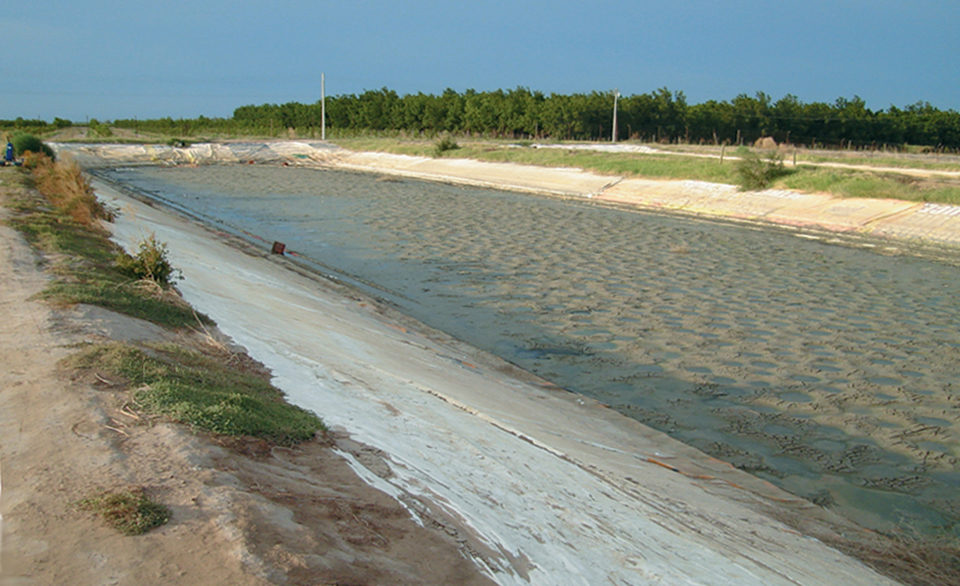
(Editor’s Note: This article was originally published in the November/December 2010 print edition of the Global Aquaculture Advocate.)
Now that you've reached the end of the article ...
… please consider supporting GSA’s mission to advance responsible seafood practices through education, advocacy and third-party assurances. The Advocate aims to document the evolution of responsible seafood practices and share the expansive knowledge of our vast network of contributors.
By becoming a Global Seafood Alliance member, you’re ensuring that all of the pre-competitive work we do through member benefits, resources and events can continue. Individual membership costs just $50 a year.
Not a GSA member? Join us.
Authors
-
Dr. M.M. Mariscal-Lagarda
Centro de Estudios Superiores del Estado de Sonora
Hermosillo, Sonora, Mexico -
Dr. José Luis Esquer-Méndez
Centro de Estudios Superiores del Estado de Sonora
Hermosillo, Sonora, Mexico -
Dr. F. Páez-Osuna
Instituto de Ciencias del Mar y Limnología
Joel Montes Camarena s/n
Mazatlan, Sinaloa, Mexico[120,109,46,109,97,110,117,46,114,111,100,105,118,114,101,115,64,115,111,122,101,97,112]
Related Posts
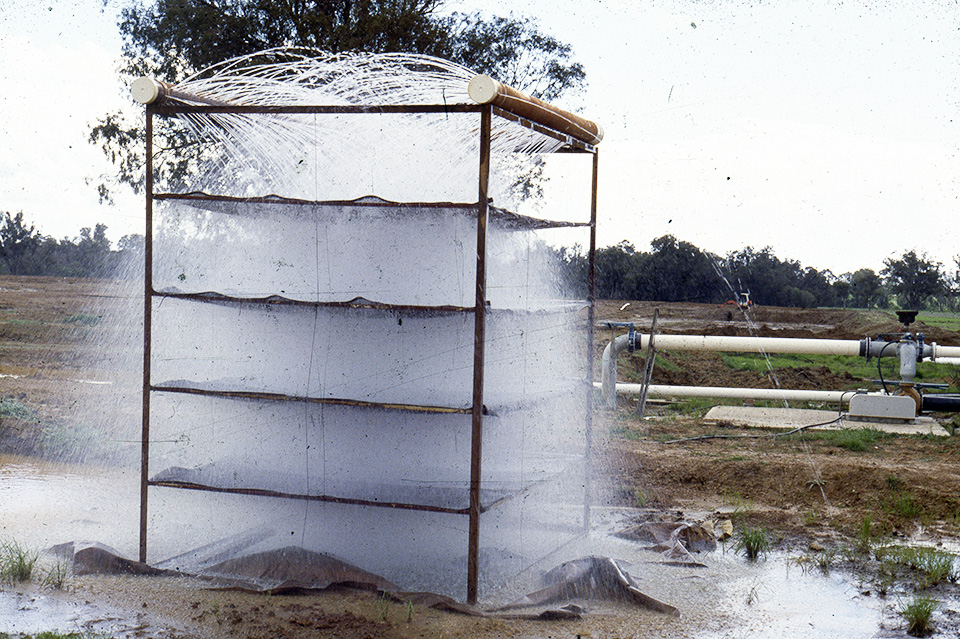
Responsibility
Assessing groundwater quality in aquaculture
Those interested in using groundwater for aquaculture should perform a thorough chemical analysis of the water. Several problems related to groundwater use in hatcheries and holding or transport vessels can be alleviated by degassing or aeration.
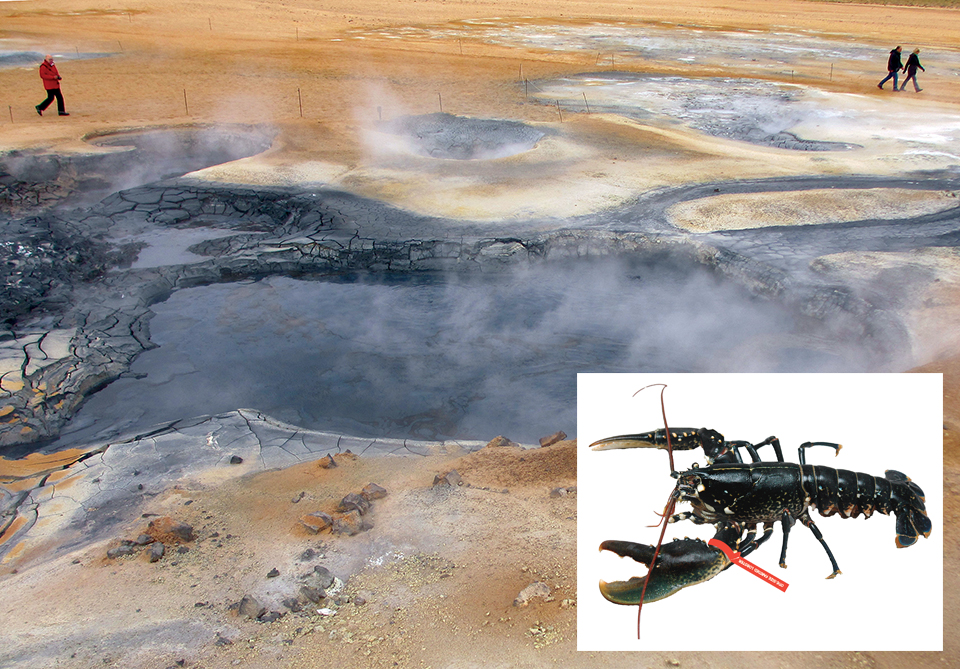
Innovation & Investment
Pilot lobster production facility in Iceland used geothermal groundwater
Following earlier work in southwestern Norway that achieved semi-commercial production of European lobsters, a project has received grant support to develop commercialized land-based recirculating aquaculture of lobsters utilizing geothermal water sources in Iceland.
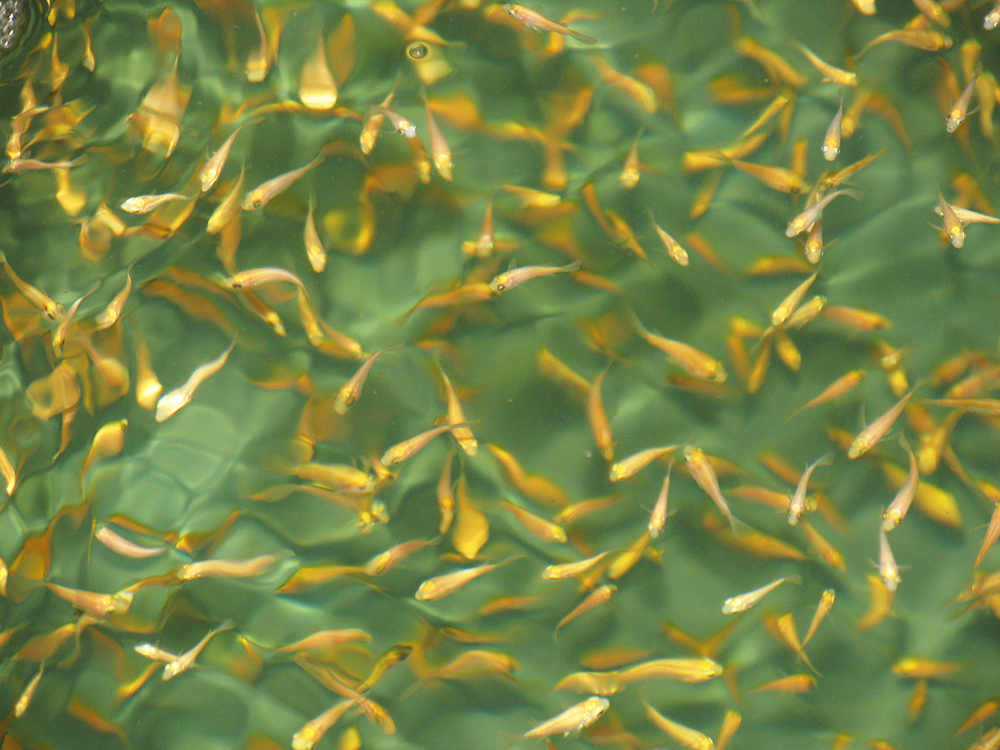
Health & Welfare
Biosecurity practices on fish farms need beefing up
Biosecurity measures and preventive strategies are essential in any biological production chain. Properly planned and implemented biosecurity programs will enhance animal health, production and economics.
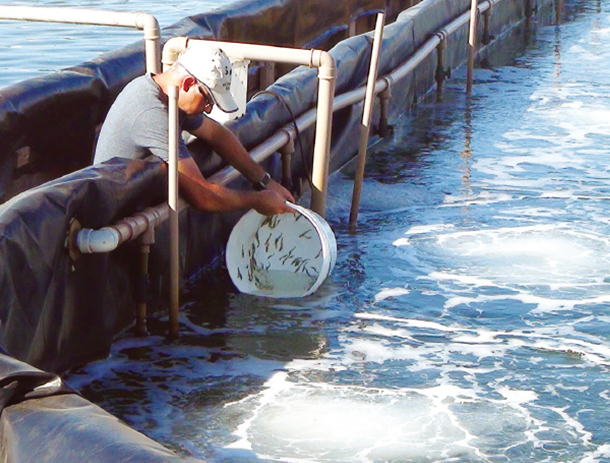
Innovation & Investment
Brazil study results encouraging for injector
Zero-exchange biofloc systems allow elevated stocking densities and production, but also require more dissolved oxygen and thorough water circulation. A new type of air injector uses only a centrifugal pump to recirculate water while naturally aspirating ambient air.


